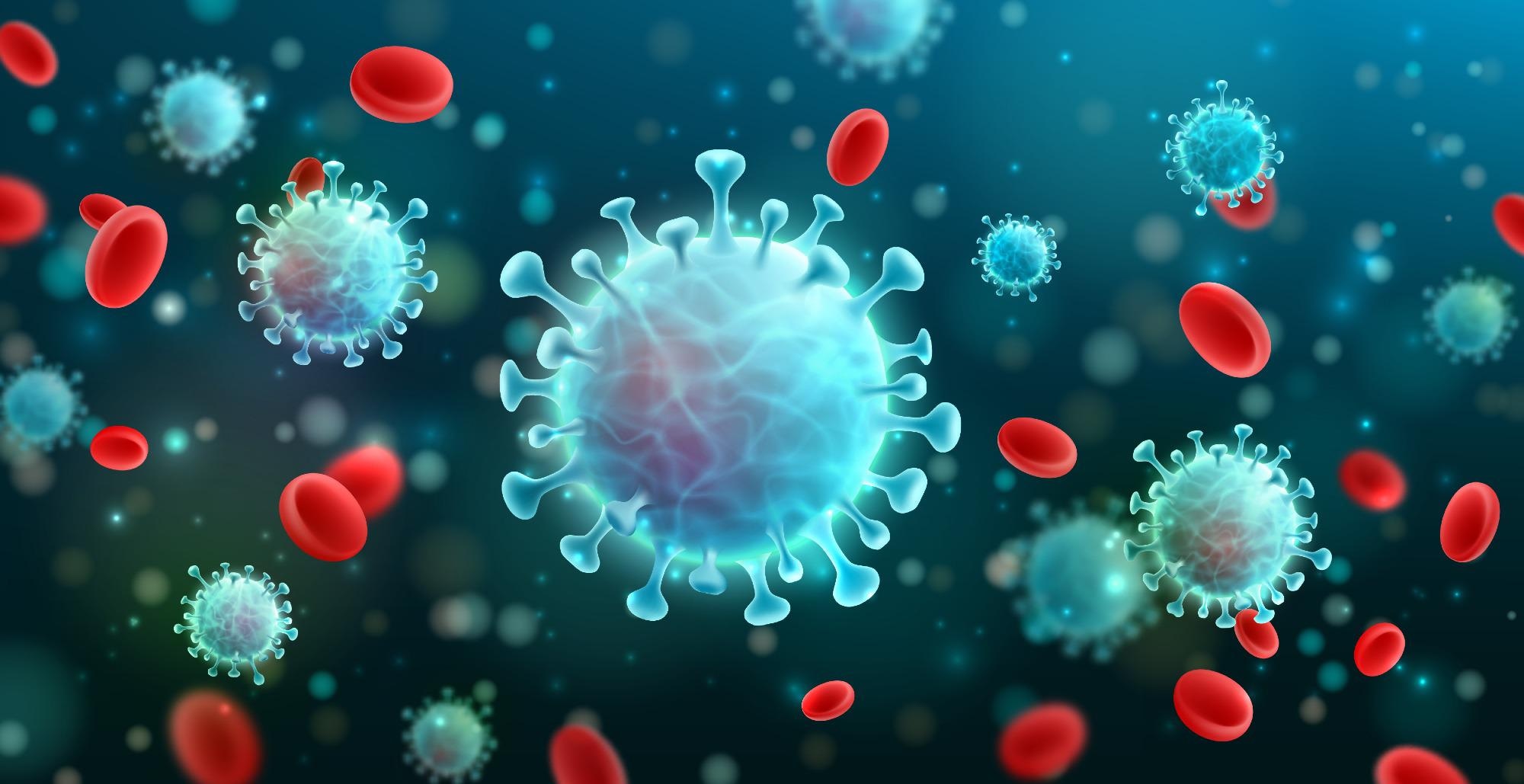Novel research has been published in the journal, ACS Applied Materials and Interfaces, which aims to inhibit the SARS-CoV-2 (COVID-19) virus while also tackling the associated inflammation. This research investigates a nano-bait strategy based on exosome-sheathed polydopamine nanoparticles for this therapeutic application.

Study: HACE2-Exosome-Based Nano-Bait for Concurrent SARS-CoV-2 Trapping and Antioxidant Therapy. Image Credit: Fotomay/Shutterstock.com
The Requirement for Novel Treatment Strategies
With the severe acute respiratory coronavirus 2 (SARS-CoV-2) resulting in one of the largest pandemics that has affected the global population with more than 300 million cases worldwide, and over 5 million deaths, the need for effective therapeutic treatment options is critical.
The high transmissibility of this virus led to a global public health crisis, causing national lockdowns with policies such as mask-wearing, isolation, social distancing being mandated to reduce the transmission of the infection.
Being associated with various variants, the SARS-CoV-2 virus has high mutability, causing new waves of infections to soar through different populations across countries. The mildest form can result in flu-like symptoms, from a cough to a fever. However, with infections transmitted to the elderly and vulnerable such as with co-morbidities, the most severe form can lead to hospitalizations with various conditions, including acute respiratory distress syndrome, pneumonia and even death.
Although there have been vaccines that have aided with the reduction in severe presentations, there have not yet been effective therapeutic options to treat this infectious virus.
In an aim to address this challenge, researchers have begun an investigation involving a nano-bait strategy based on exosome-sheathed polydopamine nanoparticles (PDA@Exosome) as a novel treatment approach.
Novel COVID-19 Research
COVID-19 research has found the SARS-CoV-2 virus to bind to the angiotensin-converting enzyme 2 (ACE-2) receptor on the alveolar epithelial cells via its spike protein (S protein). This interaction enables entry into the human host cell, completing the virus life cycle.
Most research on COVID-19 therapeutics has focused on the S protein, with the notion that successful treatments will be achieved if the spike protein is blocked from binding to the ACE-2 receptor. This can be seen with the development of anti-SARS-CoV-2 neutralizing antibodies, soluble recombinant ACE2 proteins, and natural active compounds to block this critical interaction.
The research team has taken into account the local inflammatory response, leading to severe pneumonia in infected patients that manifest with severe symptoms. Subsequently, the development of this advanced therapeutic option aims to prevent new infections by the virus and relieve oxidative stress and inflammation to reduce organ injury.
The researchers utilized PDA@Exosome nanoparticles sourced from H293T cells, with a pre-engineered expression of ACE2 on its surface. Additionally, the inner core of the PDA nanoparticle comprised a melanin-like structure due to having a strong antioxidant capacity, which would also be beneficial for reducing oxidative stress.
The ACE2 expression on PDA nanoparticles enabled them to compete with ACE2 expressing alveolar epithelial cells for binding with the coronavirus spike protein. The competitive binding ability of the exosome enabled these novel ACE2 expressing nanoparticles to intercept and trap the coronavirus. The nano-bait led to a redirection of the viral attack from the SARS-CoV-2 virus via the spike protein.
It also enhanced control of the immune response through mediating oxidative stress as well as its adverse effects such as the level of inflammatory cytokines and a potential ‘cytokine storm’.
In vivo experimentation on mice also illustrated a significant decrease in inflammatory factors, with milder lung tissue being found compared to other treatment groups.
With inflammation being a factor for organ injury, the mediation of this occurrence can significantly reduce the number of hospitalizations as well as death from organ injury and failure.
Significant Implications for The Future
This promising nano-bait strategy can reduce the transmissibility of the SARS-CoV-2 virus, further decreasing the severity of this disease and enabling normality within society.
Vulnerable patients and elderly, who were at most risk for severe manifestations of the infection, might be offered some reprieve with the potential translation of this effective research and live a less isolated lifestyle that they had been burdened with during the pandemic for safety reasons.
The innovative combination within this therapy illustrated a synergistic effect for treating the COVID-19 infection, which may provide a safe and effective therapy for this very transmissible virus.
Additionally, with this approach focusing on binding to the spike protein rather than targeting the structure of the virus, it may not be affected by its mutability, and in the face of emerging novel variants, this treatment option has the potential to hold strong.
Continue reading: How Polymer Nanoparticles Could Slow the Spread of COVID-19.
Reference
Ma, X., Guo, S., Ruan, S., Liu, Y., Zang, J., Yang, Y., Dong, H., Li, Y., Ren, T., An, M. and Li, Y., (2022). HACE2-Exosome-Based Nano-Bait for Concurrent SARS-CoV-2 Trapping and Antioxidant Therapy. ACS Applied Materials & Interfaces,. Available at: https://pubs.acs.org/doi/10.1021/acsami.1c19541
Further Reading
Centers for Disease Control and Prevention. (2022) COVID Data Tracker. [online] Available at: https://covid.cdc.gov/covid-data-tracker/#global-counts-rates
Cascella M, Rajnik M, Aleem A, et al. (2022) Features, Evaluation, and Treatment of Coronavirus (COVID-19) In: StatPearls [online]. Treasure Island (FL): StatPearls Publishing; 2022 Jan-. Available from: https://www.ncbi.nlm.nih.gov/books/NBK554776/
He, F., Deng, Y. and Li, W., (2020). Coronavirus disease 2019: What we know?. Journal of Medical Virology, 92(7), pp.719-725. Available at: https://onlinelibrary.wiley.com/doi/10.1002/jmv.25766
Disclaimer: The views expressed here are those of the author expressed in their private capacity and do not necessarily represent the views of AZoM.com Limited T/A AZoNetwork the owner and operator of this website. This disclaimer forms part of the Terms and conditions of use of this website.